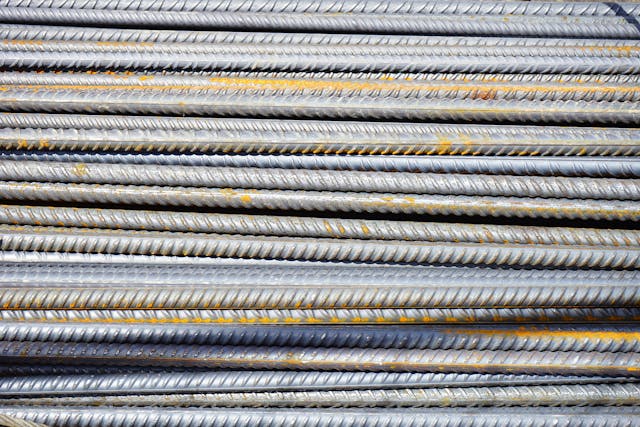- Sustainable construction practices protect the environment while reducing long-term operational costs.
- Initial investments in green buildings result in savings and efficiency gains over the lifecycle of a building.
- Complying with evolving sustainability regulations ensures project success and avoids potential legal and financial setbacks.
- Changing the construction industry’s traditional mindset is essential for adopting sustainable practices.
Sustainable construction takes the lead in a world facing immediate and long-term environmental challenges. It involves creating healthier environments by reducing consumption, waste, and harmful emissions. This goes beyond adding green elements; it’s a holistic approach to balancing structural needs without harming the planet for future generations. Explore how these practices help mitigate environmental impact, enhance health, and ensure economic viability.
Beyond Buildings and Infrastructure
Sustainable construction practices go beyond environmental altruism; they offer tangible benefits that resonate with business and society. Below are several advantages.
Environmental Impact Reduction
Adopting sustainable techniques and materials can significantly reduce a building’s carbon footprint. Efficient resource utilization, lower energy consumption, and decreased greenhouse gas emissions contribute to environmental preservation. These reductions are not merely commendable—they are a moral imperative and a benchmark for industry due diligence.
Cost-Effectiveness in the Long Term
An initial investment in sustainable construction may appear steep, but it’s a long game that inevitably pays off. Energy-efficient buildings save on utility costs, advanced construction methodologies decrease project timelines, and materials designed to last offer extended lifecycles. It’s not a question of whether the investment will be recovered but the period it will take to return.
Health and Well-being of Occupants
Buildings designed with sustainable practices promote better indoor air quality, non-toxic materials, and daylight optimization. Research consistently shows improved health outcomes and productivity directly result from a consciously built environment. Employee satisfaction, healthcare costs, and optimized work performance are all part of the compelling upside to a sustainable approach.
Key Practices in Sustainable Construction
The implementation of sustainable construction practices is diverse and multifaceted. Here are some key strategies that form the framework of a sustainable construction process.
Use of Eco-Friendly Materials
The choice of building materials is critical. Sustainable construction favors materials that are locally sourced, renewable, and have minimal environmental impacts in manufacturing and disposal. This could include bamboo, highly renewable, or recycled steel, significantly reducing the carbon emissions associated with producing new steel.

Energy-Efficient Design
Building designs that maximize natural lighting, promote efficient airflow, and minimize energy consumption are central to sustainable construction. Incorporating passive solar design and employing technology to optimize solar gain and thermal mass can significantly reduce heating and cooling requirements, making for a more energy-independent structure.
Waste Management Strategies
Construction naturally produces a significant amount of debris. Implementing prefabrication, designing for deconstruction, and salvaging materials can dramatically reduce waste. These practices benefit the environment and the project by lowering waste removal and disposal costs.
Always Prevent Stormwater Pollution
Controlling stormwater pollution is an essential aspect of sustainable construction, as it helps to prevent harmful pollutants from entering natural water bodies. It may not be the first thing on a constructor’s mind, but it’s an overlooked aspect of sustainable site management.
Contaminants carried by stormwater can have detrimental effects on local ecosystems. A solid stormwater pollution prevention plan in this area can save money, time, and effort. Silt fencing, erosion control, and using sediment basins ensure that construction activities do not degrade water quality.
In addition, rainwater harvesting systems capture and store rainwater for onsite use, reducing the demand for treated water and mitigating stormwater runoff. This collected water can be used for irrigation, flushing toilets, and cooling systems, further enhancing a building’s sustainability profile and reducing its environmental footprint.

Challenges in Implementing Sustainable Practices
Initial Costs and Investment
The up-front costs of sustainable building can be a tough sell, especially compared to traditional construction methods. However, these costs can be mitigated through savings in energy and maintenance over the infrastructure’s longevity.
Regulatory Compliance
Navigating the complex web of regulations and standards can be daunting. However, understanding these requirements is key to avoiding costly delays and ensuring that your project meets the necessary benchmarks for sustainability.
Changing Industry Perceptions
Traditional methods and materials have a firm foothold in the construction industry, and change is often met with resistance. Education, advocacy, and exemplifying the benefits of sustainable practices are crucial in shifting these deeply-rooted perspectives.
In the race to build the next great tower, it is not only speed that matters but the wisdom to ensure that it is built to last and to do so with reverence for the environment. This article provides a roadmap for businesses and professionals in the construction industry to engage with sustainable practices. It frames sustainability not as an additional task but as the architecture of sound building principles.
